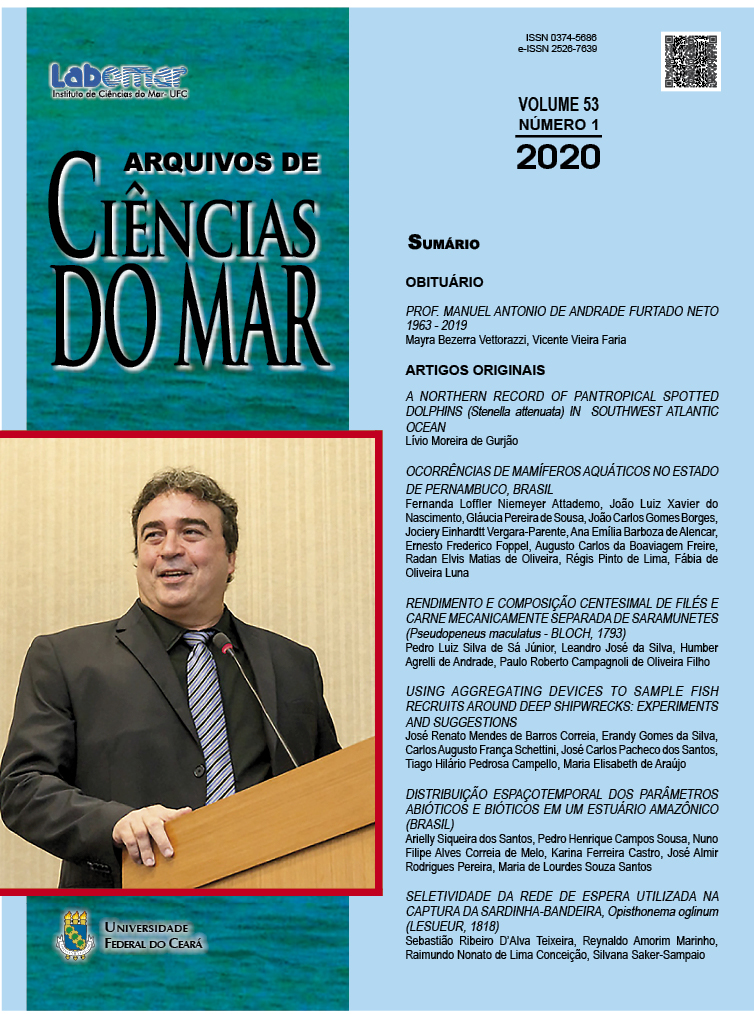Yield and centesimal composition of fillets and mechanically separate meat of spotted goatfish (Pseudupeneus maculatus Bloch, 1793)
Yield and centesimal composition of fillets and mechanically separate meat of spotted goatfish (Pseudupeneus maculatus - Bloch, 1793)
DOI:
https://doi.org/10.32360/acmar.v53i1.42985Abstract
The objective of the study was to evaluate the yield and the centesimal composition of spotted
goatfish fillets and mechanically separated meat (MSM) without washing, with one and two washes
with water. The spotted goatfish presented slightly lower fillet yield when compared to other fish. On
the other hand, the MSM yield is close to that observed in other commercial fish. The moisture of the
MSM was higher (P < 0.05) than the spotted goatfish fillets, and the increase in the number of
MSM washes caused an increase of moisture. The fillets had high protein content, higher (P < 0.05)
than MSM. The fillets presented low percentage of lipids. The MSM showed a higher percentage of
lipids than the fillets, and the increase in the number of MSM washes caused a decrease (P < 0.05)
in the percentage of lipids. The percentage of ashes from MSM was higher than the fillets and there
was also decrease (P < 0.05) after washing. The centesimal composition of the MSM was close to
that of the fillet. However, washing MSM increases the moisture content and decreases protein,
lipid and ash. Therefore, it is recommended not to wash the MSM to avoid losses of nutritional
compounds (protein, lipids and ash) and the formation of liquid residues.
Downloads
Published
Issue
Section
License
1. Proposta de Política para Periódicos de Acesso Livre
Autores que publicam nesta revista concordam com os seguintes termos:
- Autores mantém os direitos autorais e concedem à revista o direito de primeira publicação, com o trabalho simultaneamente licenciado sob a Licença Creative Commons Attribution que permite o compartilhamento do trabalho com reconhecimento da autoria e publicação inicial nesta revista.
- Autores têm autorização para assumir contratos adicionais separadamente, para distribuição não-exclusiva da versão do trabalho publicada nesta revista (ex.: publicar em repositório institucional ou como capítulo de livro), com reconhecimento de autoria e publicação inicial nesta revista.
- Autores têm permissão e são estimulados a publicar e distribuir seu trabalho online (ex.: em repositórios institucionais ou na sua página pessoal) a qualquer ponto antes ou durante o processo editorial, já que isso pode gerar alterações produtivas, bem como aumentar o impacto e a citação do trabalho publicado (Veja O Efeito do Acesso Livre).

